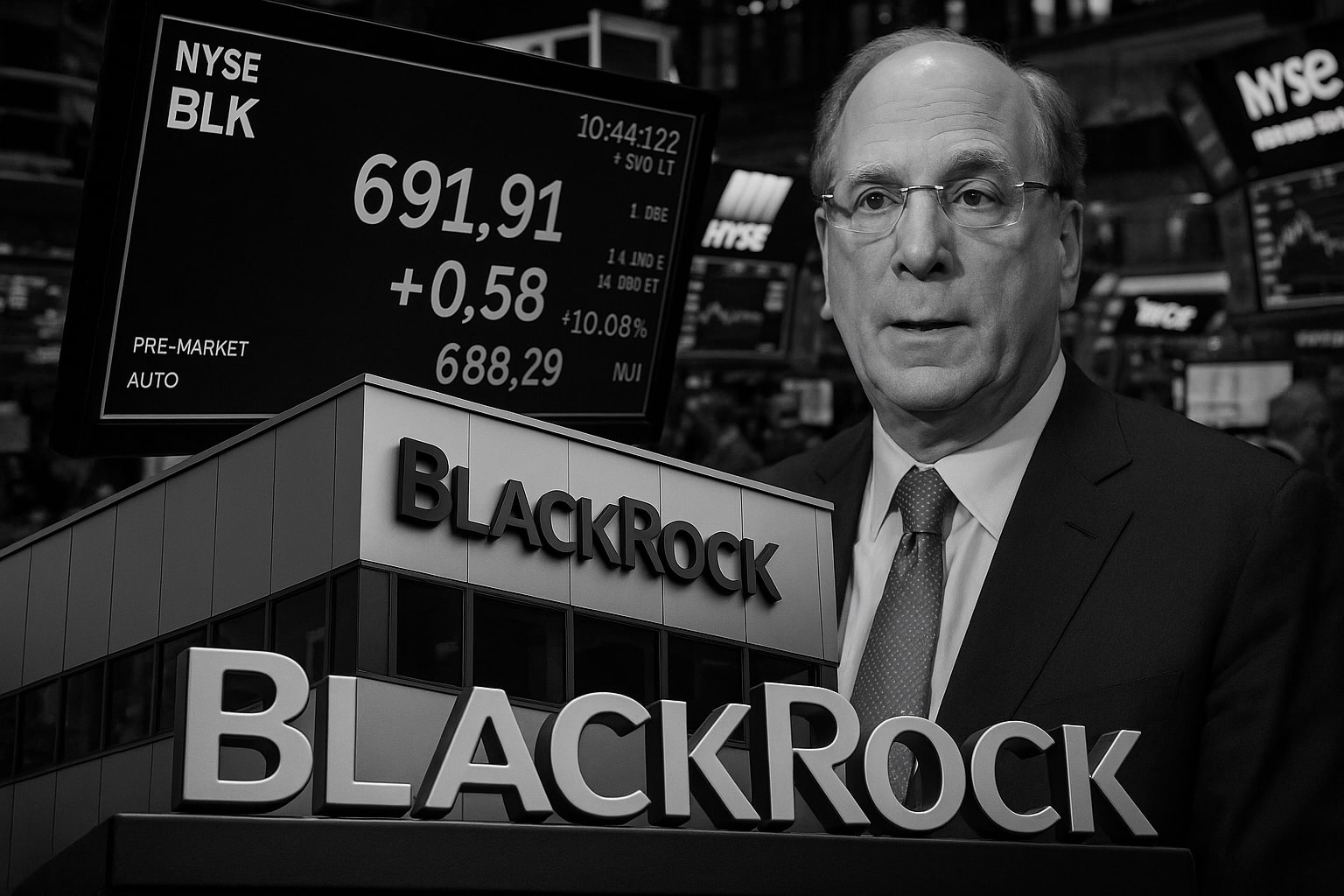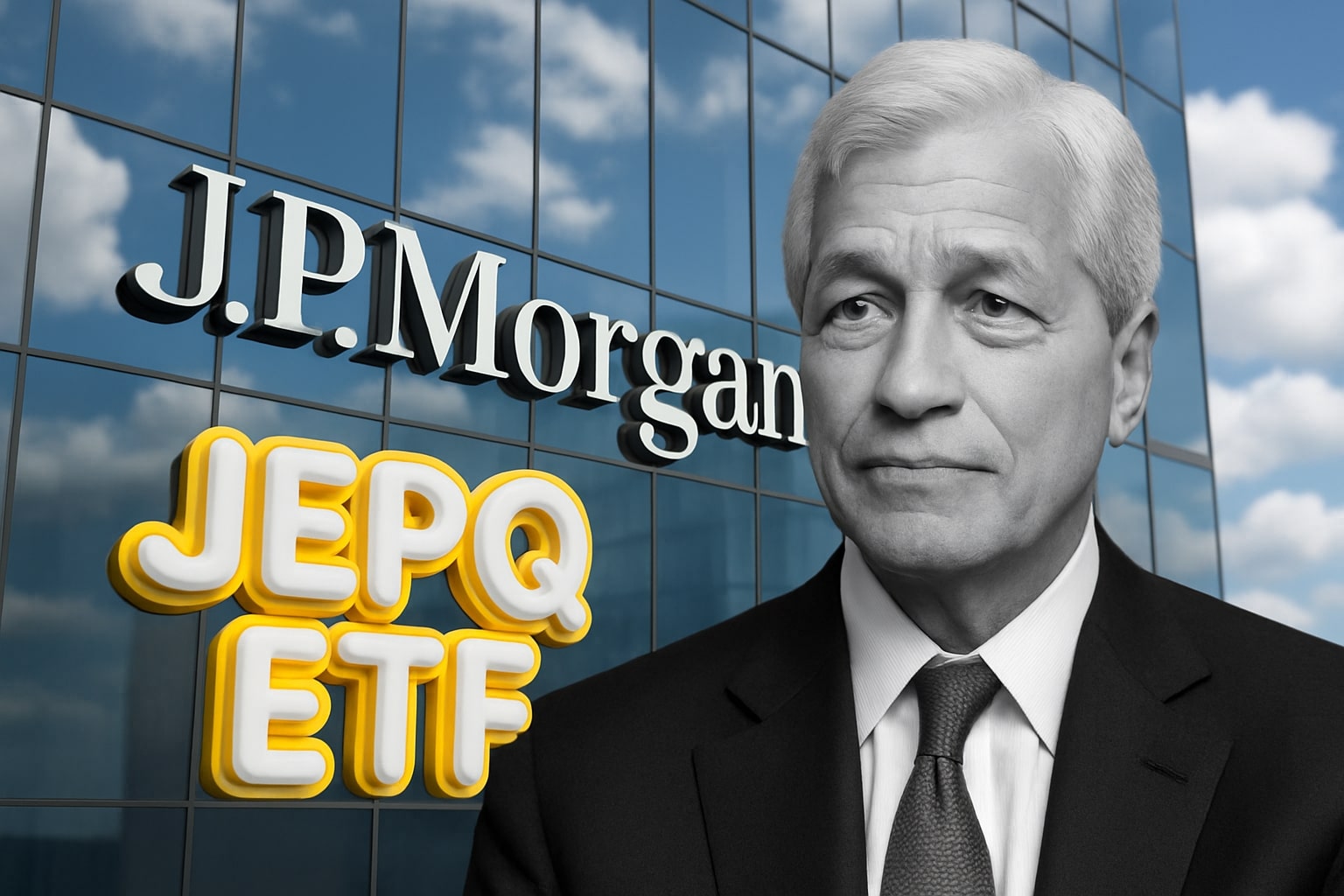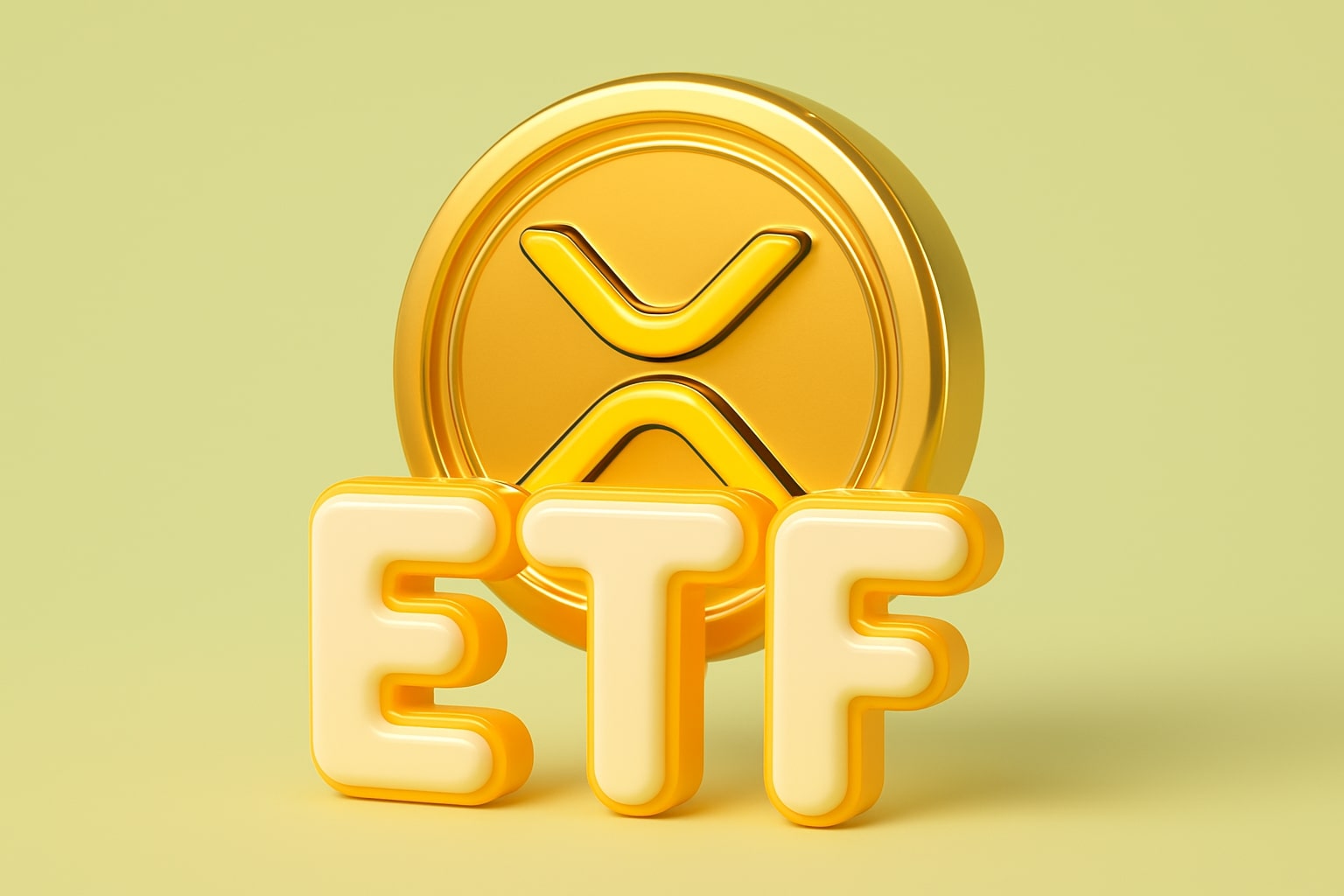BlackRock (NYSE:BLK) Surges Toward $1,250 as $5.42B Revenue, AI Infrastructure Bets, and GIP Integration Redefine Asset Management
BlackRock Inc. (NYSE:BLK) continues to prove why it remains the world’s dominant asset manager, with shares climbing to $1,247.89, up 21% year-to-date, driven by strong earnings, AI-powered expansion, and a record $10.5 trillion in assets under management (AUM). Despite market volatility following renewed U.S.–China tariff tensions, BlackRock’s $5.42 billion Q2 revenue and $12.05 EPS reaffirm its ability to sustain double-digit growth across both retail and institutional segments.
Earnings Strength and Margin Resilience Define 2025
The firm’s Q2 2025 profit margin stood at 29.7%, underscoring operational discipline despite inflationary pressure on costs and integration spending from recent acquisitions. Net income hit $1.63 billion, up 17.8% YoY, while the operating margin held firm at 38%, reflecting continued demand for low-cost ETFs, retirement products, and infrastructure mandates.
Over the past year, revenue expanded 12.9%, driven by inflows of $154 billion, led by iShares ETFs and BlackRock Alternatives, which saw $26 billion of net inflows from institutional mandates. The Aladdin technology platform, used by over 1,000 financial institutions globally, grew revenues by 9.6%, reinforcing its role as the backbone of the firm’s data analytics ecosystem.
AI Infrastructure Investments Cement BlackRock’s Strategic Edge
A defining factor in 2025 has been BlackRock’s aggressive pivot toward AI infrastructure and digital asset integration. The firm co-led a $30 billion data center expansion with Microsoft and NVIDIA, aimed at scaling compute power for AI-driven investment modeling. This initiative underpins Aladdin’s next-generation portfolio simulations and risk management capabilities, creating deep synergies between asset management and data analytics.
Additionally, the company disclosed $295 million in strategic digital-asset allocations, including exposure to blockchain tokenization platforms and crypto ETFs, marking its first significant push into regulated on-chain finance. CEO Larry Fink emphasized AI’s transformative role, calling it “the most important long-term productivity engine in asset management since the ETF revolution.”
Strategic Acquisitions Strengthen Multi-Asset Leadership
BlackRock’s acquisition spree in 2025 was unmatched. The firm finalized the purchase of Global Infrastructure Partners (GIP) for $12.5 billion, creating the world’s largest infrastructure investment platform with $150 billion in AUM across energy, transport, and digital assets. This move reinforced BlackRock’s dominance in the transition economy, aligning with the $275 billion global push toward decarbonization and grid modernization.
In parallel, Preqin, HPS, and ElmTree acquisitions expanded private credit and alternative data capabilities. These deals are expected to add $650 million in incremental annual revenue by 2026. Meanwhile, BlackRock’s stake in AES Corporation’s grid business positions it directly within U.S. power infrastructure—a hedge against rising utility volatility and AI-related energy demand.
Valuation, Profitability, and Dividend Stability
At a market cap of $175 billion, BlackRock trades at a forward P/E of 22.0, slightly above its five-year average of 20.4, reflecting its premium positioning and AI integration upside. Return on equity remains a robust 15.6%, while free cash flow for the trailing twelve months reached $5.9 billion, supporting its generous shareholder returns.
The company maintains a dividend yield of 1.84%, equating to an annual payout of $20.84 per share, with a payout ratio of 42%. BlackRock’s 18-year streak of dividend hikes and consistent double-digit ROIC make it one of the most reliable income growth plays in global finance.
Technical Setup: Momentum Targets $1,323 Resistance
From a technical perspective, BLK continues to trade above its 50-day ($1,167) and 200-day ($1,042) moving averages, confirming a sustained bullish structure. The stock’s RSI of 67 shows moderate strength with limited overbought risk. Immediate resistance sits at $1,323, while strong institutional buying below $1,180 provides a cushion.
If momentum holds, a breakout could retest the $1,690 long-term extension zone, while short-term pullbacks should find support around $1,055–$1,070. The beta of 1.46 implies higher volatility relative to peers, but the trend remains decisively positive as earnings visibility improves.
Institutional Confidence and Insider Dynamics
Institutional investors remain overwhelmingly bullish, holding 83% of outstanding shares, with steady inflows from major pension and sovereign wealth funds. Recent insider transactions show balanced activity—modest executive profit-taking offset by strategic share purchases from board members following the Q2 earnings beat.
🔗 View Insider Transactions
Macro Backdrop and Policy Sensitivity
Despite near-term challenges from Trump’s renewed 100% China tariffs and global market volatility, BlackRock’s diversified exposure across equities, fixed income, and infrastructure provides insulation against cyclical shocks. The company’s energy and utilities allocations, particularly through its GIP platform, position it to benefit from both U.S. reindustrialization and rising grid demand from AI data centers.
However, ESG backlash continues to present headline risk. Several U.S. states have withdrawn roughly $13 billion from BlackRock-managed ESG funds, citing political concerns. Yet these outflows represent less than 0.1% of total AUM, and management has pivoted toward performance-based sustainability strategies to offset reputational friction.
Integration and Cost Management Risks
The main operational risk for BlackRock lies in the integration of large-scale acquisitions like GIP and Preqin, where synergy targets total $450 million by 2027. Cost efficiencies are already visible—operating expenses rose only 4.2% YoY despite three concurrent integrations. Still, execution missteps could pressure margins in the next two quarters.
AI and Infrastructure: The New Twin Growth Engines
AI and energy infrastructure are now the twin pillars of BlackRock’s forward growth. The firm’s strategic alignment with Microsoft and NVIDIA not only enhances its technological edge but positions it at the intersection of finance and compute power. Parallelly, GIP’s physical infrastructure portfolio complements that digital ecosystem, creating a hybrid asset model spanning $10.5 trillion in total exposure.
Market Performance and Outlook
Over the last twelve months, BlackRock’s total return hit +20.9%, while the five-year compounded gain of 108.8% underscores its long-term wealth-creation capacity. Analysts’ 12-month price targets range from $1,280 to $1,700, reflecting consensus upside of roughly 25% from current levels.
🔗 Real-Time Chart
Final Verdict: Buy — Leadership, Scale, and AI Integration Justify Premium
BlackRock’s unmatched global presence, technology-first strategy, and balance-sheet strength make NYSE:BLK a premier asset management play in an AI-driven financial world. With consistent earnings growth, rising dividend yields, and exposure to high-demand sectors like infrastructure and data, the firm is positioned for sustained outperformance.
Verdict: Buy — Short-term target $1,323; medium-term target $1,690; long-term fair value $1,850.
Upside rests on AI monetization and infrastructure yield expansion, while downside risk remains minimal as long as revenue momentum and inflows stay intact. BlackRock remains the benchmark of global asset management excellence.
That's TradingNEWS



















